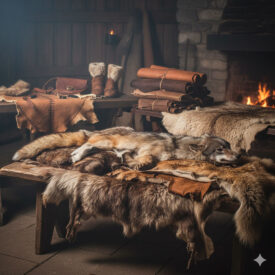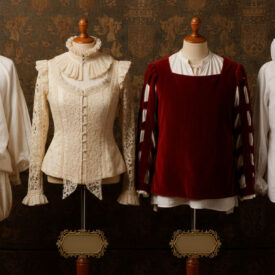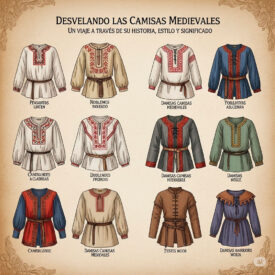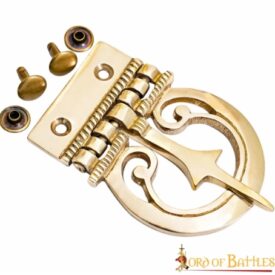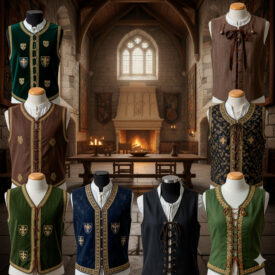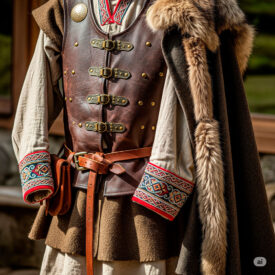The belt, an apparently simple garment accessory, has transcended its utilitarian function throughout history. Far from being just an accessory for adjusting clothing, it became a powerful symbol of status, identity, and power, especially for warriors and figures of high rank. In this article, we will travel through different eras and cultures to uncover the rich history behind Roman, medieval, Celtic, Viking, and pirate belts, examining how their design, materials, and use reflected the societies in which they were worn.
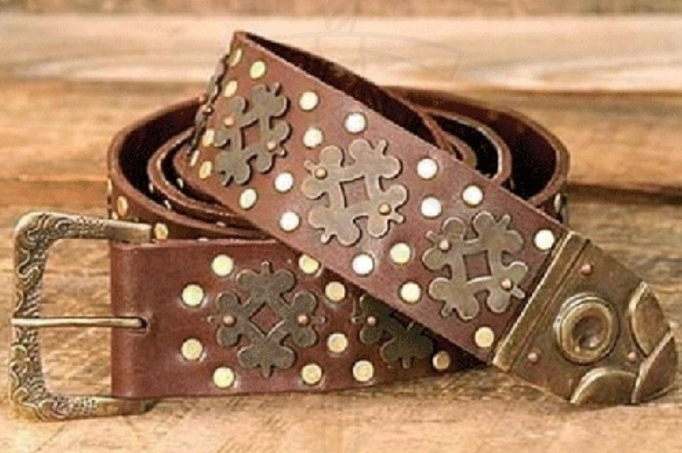
In the Neolithic, its purpose was purely practical: leather strips to secure furs used as clothing. Over time, the evolution of clothing and the development of more complex societies elevated its significance. From Roman military discipline to the rich ornamentation of the Middle Ages, the belt became a canvas to express social position and cultural beliefs. The belt was used to carry the ancient warrior’s sword or dagger and was an important part of male attire.
The Roman Belt: Cingulum Militare, Symbol of Honor and Discipline
At the heart of the vast Roman Empire, the belt (known as a cingulum or balteus) was much more than just a piece of clothing. For the Roman legionary, it was a mark of his profession and an emblem of his commitment to the legion. Losing one’s belt was the greatest humiliation for a soldier, equivalent to being stripped of his honor. Its importance was not only symbolic but also functional, as shown by the evolution of the Roman army from a citizens’ militia to a professional, formidable force.
The Cingulum or Roman belt was the belt used by Roman army soldiers to fasten their tunic and hang their bladed weapons, such as the gladius sword or the pugio. It was also known as balteus, the standard belt used by Roman legionaries which, thanks to its bronze-studded fringes, provided light protection against cuts in the pubic area.
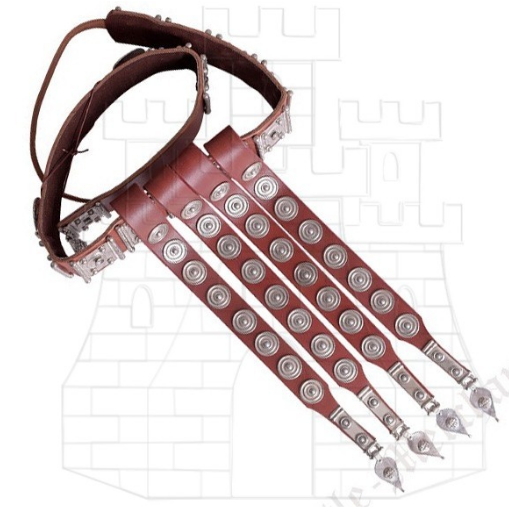
The Romans, pragmatic and adaptable, copied and improved weapons from their enemies, but the belt always retained its central place. Although the basic clothing, like the short-sleeved tunic, remained constant, the cingulum militare, often wide and decorated, denoted the status of a legionary. It was the fundamental accessory for carrying key weapons such as the gladius hispaniensis (short sword) and the pugio (dagger), ensuring the soldier was always ready for combat.
Materials and Craftsmanship: The Art of Leather and Metal
The manufacture of these belts was a highly skilled craft. Mostly made of leather (from cow, goat, or deer) and metal (bronze, iron, silver), they required techniques such as tanning, stamping, and engraving. The quality of the material and the complexity of the decoration were a direct reflection of the wearer’s status and wealth.

They were generally made of leather or woven fabric, with or without a simple buckle in copper, brass, or bronze alloy. Their manufacture combined techniques such as forging and casting to create the buckles and metal decorations that adorned the belt.
Medieval Belts: The Truth Behind the Myth of Excessive Length
The Middle Ages was a time of great ornamentation, where clothing reflected social status and class membership. However, a popular myth in historical reenactment is that of medieval belts that are excessively long and hang down to the knee. Historical research, such as that by Christopher Kunz, disproves this assumption, revealing a diversity of styles and lengths.
The reality is that there were many ways to wear a belt, depending on culture, hierarchy, and gender. Most belts had a short tip, practical enough not to interfere with daily activities. The long tip did exist, especially in belts from Eastern Europe, but its function was more decorative, allowing ornaments to be displayed, and they usually did not hang below the crotch. The long tip was typically managed in various ways to avoid discomfort, such as tucking it under the tunic, securing it in a loop, or even tying a knot. This historical detail reminds us of the importance of precise research versus idealization.

The long studded medieval belt, although visually striking, was more the exception than the rule. Its main function, as in other cultures, was to support weapons and tools, making it an essential item for knights, craftsmen, or merchants.
Viking, Celtic and Pirate Belts: Identity, Mysticism, and Adventure
Beyond great civilizations, other cultures developed their own distinctive styles of belts. Viking belts, for example, were a clear expression of status and identity. Men’s belts were wider and sturdier, designed to carry weapons such as axes and swords, and were often decorated with martial motifs. In contrast, women’s belts were narrower and more elegant, with geometric or floral patterns that showed off the wearer’s wealth.

The Celtic belt, with its intricate designs, was imbued with deep mystical symbolism. The Celts, known for their interlaced art, created designs derived from geometric motifs that had no beginning or end, symbolizing eternity and unbroken connection. Celtic knots, such as the Trinity Knot (Triquetra) or the Eternity Knot (Dara), represented protection, love, and strength, which were reflected in the buckles and belt decorations.
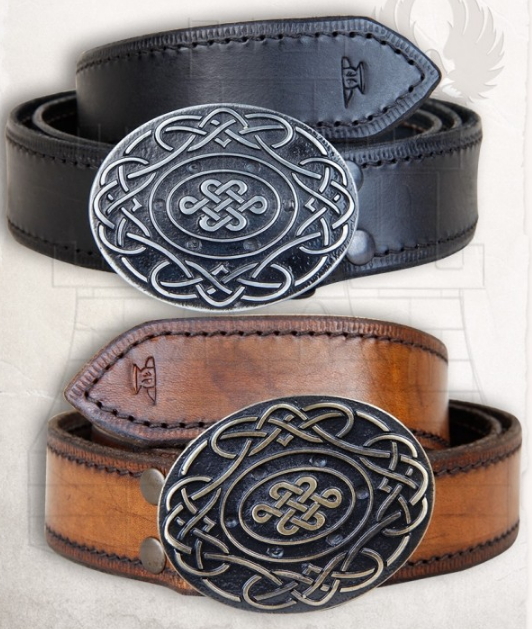
The age of piracy brought with it a bold, functional aesthetic. Pirate belts not only held up trousers, but were essential for hanging pistols, daggers, and coin pouches. Often made of sturdy leather, they were practical and reflected the adventurous, lawless life of their wearers. The simplicity of these belts contrasted with the opulence of nobility, but their usefulness was undeniable on the high seas.
The Legacy of Historic Belts
The study of historic belts offers a fascinating glimpse into past societies. It shows us that clothing was a form of non-verbal communication, a way to show social position, gender, beliefs, and even profession. The Romans taught us that the belt could be a symbol of honor and discipline. The Vikings and Celts used it to express identity and mysticism, while pirates turned it into a survival tool. The diversity of materials, techniques, and wearing styles debunks the idea of uniform dress and underscores the importance of detailed research to understand the past.

If you are passionate about historical reenactment or simply admire the craftsmanship and symbolism of these items, exploring the variety of period belts is a way to connect with the past. You can find faithful replicas of medieval studded belts, sturdy Viking belts, Roman belts, or Celtic belts with eternity knots. Each one tells a unique story. Find the perfect belt for your collection or period outfit and carry a piece of history with you.
Visit our selection of historic belts and period accessories to find authentic treasures that capture the essence of these fascinating cultures.
